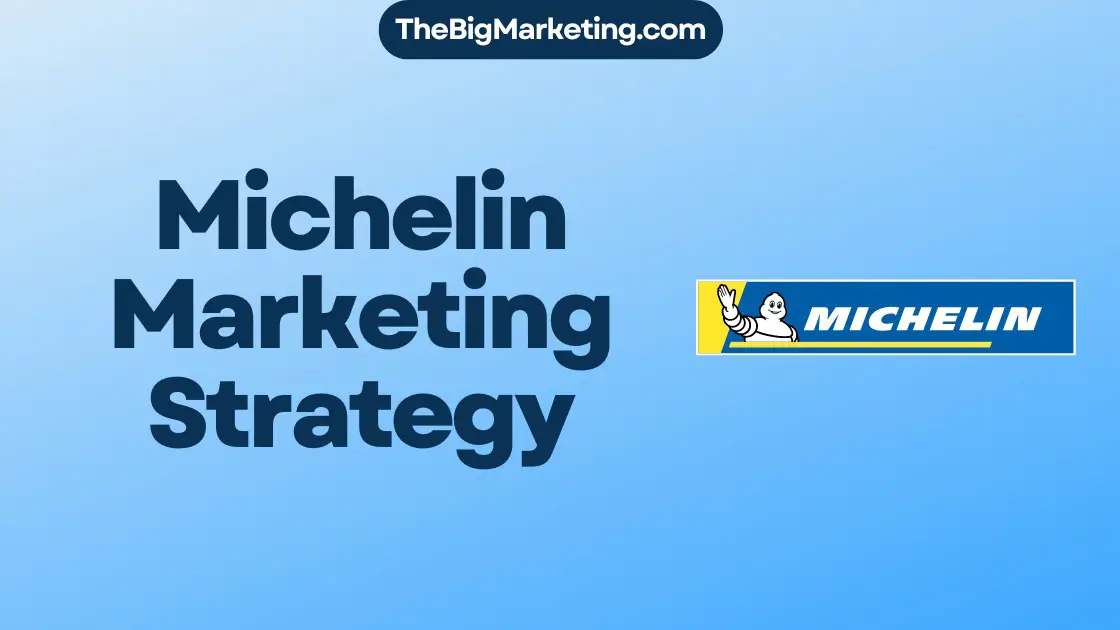SMB marketing helps small and medium-sized businesses stand out. It targets a specific group within the SMB sector. We’ll look at how SMB marketing works and show examples of its success.
Key Takeaways:
- SMB marketing is essential for small and medium-sized businesses to reach their target audience effectively.
- Effective SMB marketing strategies include digital marketing, advertising, branding, promotional strategies, online marketing, and social media marketing.
- Establishing clear goals and budgets are key factors in implementing a successful SMB marketing strategy.
- Content marketing, user-friendly website design, social media engagement, SEO, personalized email campaigns, and creative marketing campaigns are effective tactics for SMBs.
- SMBs can leverage search engine marketing techniques to increase brand visibility and drive traffic to their websites.
What is SMB Marketing?
SMB marketing, short for small and medium-sized business marketing, targets the promotion of products and services. These businesses usually have a small budget and fewer workers. Their marketing strategies must be smart and efficient to reach the desired audience.
Creating a good online marketing plan is essential. This plan includes setting goals, identifying the target audience, and picking the right channels. Using digital platforms smartly can boost SMBs’ visibility.
Content marketing is another key element. It’s about making content that the audience finds valuable. This way, SMBs become trusted experts and increase their sales.
A user-friendly website is crucial. It should be easy for visitors to get around, making it simple for them to act. Important features include clear calls-to-action and easy navigation.
Talking to your audience on social media helps too. SMBs should post where their audience hangs out. Social media ads can increase their reach.
SEO is a must to be more visible online. It helps SMBs appear higher in search results. This leads to more website visitors.
Personalized email campaigns work well. Using customer data lets SMBs send messages that really speak to their audience. This builds stronger relationships and boosts sales.
Creative marketing campaigns are important. They need to think differently to stand out. Unique ideas can make SMBs more appealing to their audience.
In summary, SMB marketing uses a mix of strategies. By doing this well, SMBs can grow their brand, connect better with their audience, and increase sales.
Establishing Goals and Budget for SMB Marketing
For SMB marketing, setting clear goals and a specific budget is key. Goals guide the strategy. The budget secures the needed resources. It’s crucial to track marketing analytics to judge the strategy’s success and tweak it as needed.
At the core of any successful SMB marketing campaign are clear, measurable goals. These should match the business’s main aims and outline the wanted results. Whether it’s about boosting brand awareness, getting more leads, or increasing sales, setting precise metrics is crucial.
A good goal for SMB marketing might be to boost website visits by 20% in the next three months. This goal checks all the boxes for being specific, measurable, achievable, relevant, and time-bound (SMART). This makes checking progress and judging success simpler.
After setting goals, figuring out the budget comes next. It must match what’s available. Even with tighter budgets, small and medium businesses can meet their goals. It’s about prioritizing and making smart choices.
Think about the various marketing areas needing funds, like ads, content, social media, email campaigns, and SEO. Consider each area’s possible return on investment (ROI). Then, distribute the budget based on that.
It’s vital to keep an eye on marketing performance through analytics. This helps in making informed decisions. Analytics offer deep insights into how campaigns, channels, and tactics are doing.
There are tools out there, like Google Analytics, to help SMBs monitor key data. Metrics such as site traffic, conversion rates, and engagement are trackable. With this data, businesses can see what’s working and what’s not. This allows for quick strategy adjustments.
Example:
To show how crucial it is to have set goals and budget, let’s look at an example:
An SMB in retail aims to grow online sales by 30% in six months. To do this, it plans to spend $5,000 on digital ads, $2,500 on content and social media, and $1,000 on email marketing.
By monitoring these efforts closely, the SMB can see which are most effective. This helps in better budget use and making smart choices to reach the sales goal.
In closing, having definite goals and a well-planned budget is vital for SMB marketing. By setting clear goals, using resources wisely, and watching analytics, SMBs can fine-tune their marketing to get the best results.
Content Marketing for SMBs
Content marketing helps small and medium businesses (SMBs) build trust and show their expertise. It connects with the audience through high-quality content that’s focused on their needs. Using different formats like blogs, videos, and infographics, SMBs offer valuable info and solutions.
This strategy builds credibility and authority in their industry. By sharing content that solves problems and provides insights, SMBs become trusted sources. This builds strong relationships with customers, increasing loyalty.
It’s important to make content that matches what the audience is searching for. Good keyword research lets SMBs create content that is easy to find online and appeals to potential customers. This boosts website visits and leads.
Using a mix of content formats helps SMBs reach more people, since everyone has different preferences. Blog posts deliver deep insights. Videos explain things easily. Infographics make data simple to understand. Ebooks offer comprehensive guides.
Let’s see content marketing in action:
| Company | Content Marketing Strategy | Results |
|---|---|---|
| XYZ Clothing | XYZ Clothing has a blog for fashion tips and works with influencers for video content. | They see more website visitors, better social media activity, increased brand recognition, and more sales. |
In this case, XYZ Clothing boosts their online presence and sales with useful fashion content. They use blogs and videos to reach and connect with their audience, leading to great results.
A strong content marketing strategy boosts SMBs’ reputations and draws in the right audience, leading to more sales. It’s vital to keep assessing how content performs and to tweak it based on feedback and trends. With dedication to creating engaging, helpful content, SMBs can use content marketing to grow their businesses.
Designing a User-Friendly Website
A well-designed website is key for small and medium-sized businesses (SMBs). It’s where products and services shine and where all marketing efforts come together. For an effective online presence, certain key factors are essential.
These include a user-friendly design that’s easy for everyone to use.
Website Navigation
Easy navigation makes browsing a breeze. A good website lets visitors quickly find what they need. This means simple menus, organized pages, and clear labels are a must. They help users enjoy their visit more.
Website Graphics
Great visuals grab attention and tell your brand’s story. Adding striking images, videos, and infographics makes a website inviting. It’s important to use high-quality graphics that fit your brand. They improve the experience and make your site memorable.
Clear Calls-to-Action
Every user-friendly website needs clear calls-to-action (CTAs). These CTAs can be for buying something, signing up, or filling out a form. With eye-catching design and persuasive words, CTAs boost conversions. They help your business grow.
Small businesses win big by making their websites user-friendly. Focus on navigation, visuals, and CTAs. Doing so turns visitors into loyal fans.
Engaging with the Audience on Social Media
Social media gives small and medium-sized businesses (SMBs) great chances to connect with their audience. They can find where their audience hangs out most and share relevant content. This helps build stronger connections and reach more people.
To really engage on social media, SMBs must know what their audience likes. Sharing interesting content that meets their needs can grab attention and encourage talks. This helps grow loyalty to the brand.
SMBs have many social media platforms to choose from, such as:
They can join in on conversations, reply to comments and messages, and post about their products or services on these sites. These actions help build a community and trust with their audience.
Social media ads are also a strong way for SMBs to reach more people. Using the platforms’ tools, SMBs can send their messages to the right audience at the perfect time. This makes their ad spending more effective.
| Benefits of Social Media Engagement for SMBs | Benefits of Social Media Advertising for SMBs |
|---|---|
|
|
SMBs should always check their social media performance. They need to look at things like how much people interact, follower numbers, and website visits. This info helps them adjust their plans to do even better.
To wrap up, social media is a key way for SMBs to talk to their audience and grow their brand. By using social media well, they can see big growth and meet their business goals.
Leveraging Search Engine Optimization (SEO)
It’s crucial for small and medium-sized businesses (SMBs) to use SMB SEO strategies. This makes their sites more visible in search engine results. SMBs can draw more visitors by improving their site rankings with great search engine optimization. They should concentrate on keyword integration and enhancing the user experience.
Keyword Integration
Adding the right keywords to your site’s content is a must. You should research to find what keywords your potential customers are searching for. Then, weave these keywords into your site’s headings, meta tags, URLs, and all through the content. Remember, stuffing your site with too many keywords can backfire. Instead, focus on creating valuable content that naturally includes these keywords.
User Experience
Creating a smooth and enjoyable user experience is also key. Websites that offer this get higher priority from search engines. This happens because a great user experience shows a site is credible and relevant. To make your site user-friendly:
- Ensure fast page load times
- Create a responsive design that adapts to different devices
- Optimize website navigation for easy exploration
- Use descriptive headers and subheadings
- Organize content with bullet points and numbered lists
- Ensure your website is mobile-friendly
Combining keyword efforts with a focus on user experience can really boost your site’s rankings. Yet, SMBs might find SEO tough to handle alone. If resources or know-how are tight, consider getting help. You might employ an SEO services firm or an SEO expert to assist you.
Personalized Email Campaigns for SMBs
Email marketing is key for SMBs to connect with their audience and grow their business. With personalized email campaigns, SMBs can boost their marketing and achieve better outcomes. These emails allow businesses to highlight their products or services, foster customer relationships, and automate to save time.
Personalized emails let you tailor messages based on what each person likes, where they live, and how they behave. This makes the experience more engaging and relevant, leading to more sales and loyalty.
For managing these campaigns, SMBs can turn to tools like MarketingCloudFX. It helps design, send, and monitor email campaigns efficiently. With automated workflows, personalization, and analytics, businesses can refine their email strategies and improve their results.
Email marketing costs vary for SMBs and depend on the size of your mailing list and how personalized you want your emails to be. You might spend $300 to $500 per month on average. However, it’s important to compare these costs against the potential benefits and value personalized emails bring.
Overall, personalized emails are a smart choice for SMBs looking to market effectively. By using email automation and personalization, businesses can create stronger ties with their audience, increase sales, and grow.
| Benefits of Personalized Email Campaigns for SMBs | Costs of SMB Email Marketing |
|---|---|
|
|
Thinking Outside the Box for SMB Marketing
SMBs can stand out by creating unique marketing campaigns. These campaigns should grab attention and make meaningful connections. To do this right, SMBs must really know what their customers like and need. This understanding helps in making tailored campaigns that hit the mark.
Adding humor to marketing can really catch people’s attention. A fun campaign can be memorable and make people feel closer to a brand. SMBs should mix humor and their brand’s message in a smart way. This blend helps in forming a bond with the audience.
Being real is crucial in marketing today. People prefer brands that are honest and clear about who they are. By being true to themselves, SMBs can earn trust and keep customers for a long time.
SMBs have many tools to bring their creative ideas to life, like social media and email. It’s important to try new things and see what strikes a chord with their audience. Keeping track of what works helps in making even better campaigns later.
Being creative, fun, and real can help SMBs make a lasting impression. By thinking outside the box, they can create a special brand identity. This approach helps them connect deeply with their customers.
| Benefits of Creative Marketing Campaigns | Examples |
|---|---|
| 1. Increased brand visibility and recognition | Example 1: The Dollar Shave Club’s humorous viral video campaign “Our Blades Are F***ing Great” |
| 2. Higher audience engagement and interaction | Example 2: Wendy’s witty and sassy responses on Twitter |
| 3. Enhanced brand differentiation and competitive advantage | Example 3: Old Spice’s humorous and memorable “The Man Your Man Could Smell Like” commercials |
| 4. Improved brand loyalty and customer relationships | Example 4: Ben & Jerry’s commitment to social and environmental causes while offering unique ice cream flavors |
Search Engine Marketing (SEM) for SMBs
SEM stands for search engine marketing. It’s a way for small and medium-sized businesses to get noticed more online. By using search engines and paying for ads, these businesses can appear higher up in search results. This means more potential customers see them when they search for related topics.
For SMBs wanting to reach more people online, using SEM is key. It not only boosts how often they’re seen but also builds trust and interest in their brand. It’s a smart strategy to engage with the right audience and increase website visits, which can lead to more sales and growth.
Driving Traffic with SEM
SEM’s main perk is bringing more of the right visitors to SMB websites. By picking the right keywords tied to their products or services, SMBs can put ads right where potential customers are looking. These ads aim to grab the attention of people already interested in what they have to offer.
With their ads at the top of search results, SMBs have a better chance of getting clicks and visits. This means getting in front of users who are more likely to buy. By creating smart ads and choosing the right keywords, SMBs can draw in valuable traffic that boosts sales.
SEM Visibility and Brand Awareness
SEM helps SMBs pop up more in online searches. Using paid ads, a business makes sure it shows up for its target audience. This boosts how many people know and recognize the brand. It makes potential customers more likely to connect with what the SMB sells.
Seeing a brand often in searches can make consumers trust it more. This trust encourages them to believe in the quality and dependability of what’s advertised. Being visible like this also positions SMBs as big players in their market, helping them compete with larger companies and win loyal customers.
SEM Techniques for SMB Success
Good SEM involves careful planning and doing. Here are key strategies for SMBs:
- Look deeply into keywords to find the best ones for your business.
- Make ads that make people want to click and discover more.
- Make sure your website’s landing pages are easy to use and geared towards making sales.
- Set a smart budget for your ads and adjust as needed for the best returns.
- Try out different ads, keywords, and website tweaks to see what works best.
- Use tools to see how successful your ads are and where you can get better.
By following these steps, SMBs can attract the right visitors, make their brand more known, and reach their business aims in the competitive online world.
SEM vs. Organic Search
| SEM | Organic Search | |
|---|---|---|
| Visibility | Immediate visibility in search results | May take time to achieve high rankings |
| Speed | Instantly drive traffic to your website | Takes time to build organic traffic |
| Control | Full control over targeting, ad copy, and budget | No direct control over search engine rankings |
| Budget | Requires a budget to sustain ad campaigns | No direct cost for organic search results |
| Long-Term Impact | Impact diminishes when ads are paused | Organic rankings can drive consistent traffic long-term |
Implementing a Small Business Marketing Strategy
Creating a small business marketing strategy is key for growth. It helps small businesses get noticed, connect with their audience, and find customers. We’ll look at important steps like knowing your audience, shaping your brand, and using online tools.
Identifying the Target Audience
Finding your target audience is a first major step. Knowing who your customers are and what they want is essential. Think about their demographics, interests, and habits. This helps you speak directly to them through your marketing.
Brand Development
Building a strong brand is critical. A unique brand sets you apart and builds trust with your customers. Create a brand voice and look that shows what you stand for. Make sure it shows in all your marketing for a lasting impression.
Creating a Business Website
Your website is central to your online marketing. It showcases your products and is the heart of your efforts. Make it appealing, easy to use, and mobile-friendly. Use clear calls-to-action to turn visitors into customers.
Setting Up Online Tools
Online tools boost your marketing. Tools like HubSpot or Salesforce help manage customer info. Platforms like Mailchimp let you send targeted emails. And tools like Hootsuite or Buffer assist with social media.
Starting a Blog
Starting a blog can show off your knowledge and draw visitors. Write useful posts that solve your audience’s problems. Use keywords to get found online. Connect with readers by engaging in comments and sharing on social media.
Choosing Appropriate Marketing Channels
Choosing where to market is important. Find out where your audience hangs out. Use social platforms like Facebook and Instagram. Think about paid ads on Google or Facebook. Maybe use email marketing or influencers.
Leveraging Advertising to Generate Outreach
Advertising extends your reach and builds awareness. Use channels like Google Ads or social media. Create ads that speak to your audience and reflect your brand. Always check your ad performance to improve.
| Marketing Strategy | Benefits |
|---|---|
| Identifying the Target Audience | – Helps tailor marketing messages |
| Brand Development | – Differentiates from competitors |
| Creating a Business Website | – Showcases products or services |
| Setting Up Online Tools | – Streamlines communication |
| Starting a Blog | – Establishes thought leadership |
| Choosing Appropriate Marketing Channels | – Targets the right audience |
| Leveraging Advertising | – Generates brand awareness |
Conclusion
Marketing is key for small and medium-sized businesses (SMBs) to grow and succeed. Through careful strategies and diverse marketing methods, SMBs can improve their presence. They can connect with their audience and reach their business goals.
SMBs need to always be on their toes, adjusting their marketing to stay ahead. This means keeping up with new digital marketing ways like SEO, content marketing, and being active on social media.
For SMBs to market well, they need a good plan, enough resources, creativity, and to follow through properly. With the right methods, SMBs can get more people to know them, win new customers, get more sales, and succeed for a long time in their industries.







